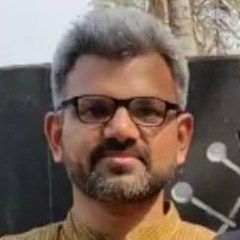Response to Nipah exposes lack of transdisciplinary co-ordination in Kerala’s health sector

Mail This Article
Two recent incidents characterised Kerala’s fight against the deadly Nipah virus infection.
On August 31, Mohammed Hashim was admitted to the Government Medical College Hospital in Kozhikode with high fever and breathing difficulties. Though the 12-year-old boy spent 24 hours in the hospital, his swab samples were not sent for testing. His condition deteriorated, and based on his relatives’ requests, he was shifted to another hospital on September 1 from where his samples were sent for testing. The tests returned positive for Nipah. Unfortunately, the boy breathed his last on September 5.
The second incident pertained to the drive to ascertain how Hashim contracted the Nipah virus. Since September 5, officials from health and animal husbandry departments have been collecting samples of bats and their excreta from the vicinity of the boy's house in Pazhoor village in Chathamangalam gram panchayat in Kozhikode district. But what surprised public health experts was the absence of officials and wildlife epidemiologists from the veterinary wing of the state forest department in the sample collection team.
The incidents, point out public health experts, demonstrate the lack of transdisciplinary coordination in fighting dreaded diseases in Kerala.
They argue that the delay in sending the samples was not just a human error, but a systemic failure of the surveillance system.
After the 2018 Nipah outbreak, which had killed 21 people in Kozhikode and Malappuram districts, a decision was taken to test samples of all persons who seek medical care for acute encephalitis syndrome (AES), pneumonia and other respiratory illnesses, for Nipah virus. This was decided based on the scientific assumption that the virus is present across the State and it would continue to infect humans.

A year later, in 2019, Nipah resurfaced in Ernakulam district, infecting only one person. Luckily, the virus didn't cause any casualties.
Failure
A senior health expert, who played a key role in tracing the Nipah virus in 2018, said on condition of anonymity, that the delay in testing Hashim’s samples showed the health department’s failure to adhere to the decision taken two years ago to quickly test samples from people with breathing difficulties. “Had they followed the protocol, the 12-year-old would have been diagnosed much earlier. It could have even saved a life,” he said.
Kerala’s Additional Director of Health Services, Dr V Meenakshi, who is dealing with public health, said the testing (samples of encephalitis patients for Nipah virus) was stopped in the wake of COVID-19. “We tested around 50 samples in 2018, but none in 2019. No such testing happened after COVID-19 began to spread,” she said.
However, the expert who preferred anonymity said Kerala would always begin well in the early stages but it would lose momentum soon. “Active testing and tracing happened immediately after the 2018 incident, but the momentum was lost in the following years. Kerala's health experts should deeply examine this public health issue,” he said.

Forest veterinary experts left out
Public health experts in the state are equally surprised about the exclusion of forest veterinarians from the team to identify the source of Nipah infection this time.
Finding out the origin of infection is an important task in controlling the virus spread. It is believed that bats, being the natural reservoir of the Nipah virus, spread the virus.
The veterinary wing of the forest department has the manpower and machinery to collect and analyse the bat samples, but those steering the drive against Nipah appear to have ignored them.
“We have the capacity to collect samples and analyse them. We had assisted the health department to identify the source of infection in 2018 and 2019. But the health department officials completely ignored us from the exercise now. This is absolutely frustrating,” said a veterinary expert in the forest wing, who wishes to remain anonymous because of professional reasons.
He said the veterinary wing of the forest department, and not the animal husbandry department, should be involved in collecting samples of wild animals. “We have identified several zoonotic diseases, such as Kyasanur Forest Disease (monkey fever) with our passive and active surveillance mechanisms. Nipah is another zoonotic disease and we have expertise in identifying the source,” he said.
The health department could not offer a satisfactory explanation for excluding the forest veterinarians from the team.
Dr Meenakshi said her department does not know what the veterinarians are doing. “How can we know about their sample collection? They never inform us about their projects,” she said.
Stand-off
The stand-off, however, has not surprised Kerala’s prominent epidemiologist Dr V Ramankutty, who has been demanding the inclusion of veterinarians in the public health panels for long.
“It is high time we included veterinarians in public health committees. Public health is not just about clinical medicine. Trans-disciplinary coordination is the need of the hour. Moreover, the whole world is moving towards the ‘One Health’ policy, which recognises that people’s health is closely connected to the health of animals and our shared environment,” he said.


